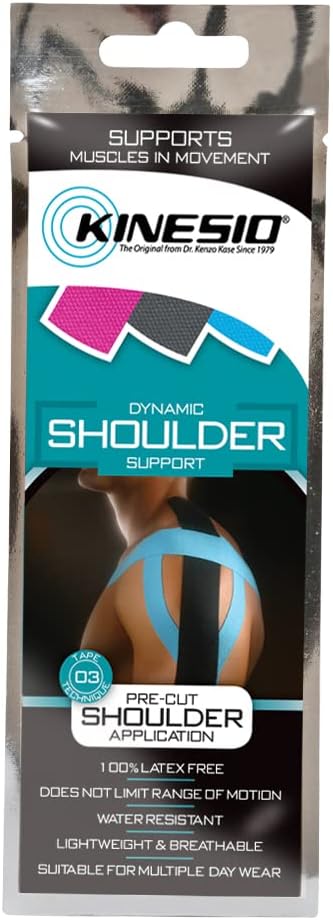About this deal
Take one full length strip of tape (about 10 inches long) and cut it in half, rounding the corners, so you have two pieces that are each about 5 inches long. Meeusen L, Candidori S, Micoli LL, Guidi G, Stanković T, Graziosi S. Auxetic structures used in kinesiology tapes can improve form-fitting and personalization. Sci Rep. 2022 Aug 5;12(1):13509. doi:10.1038/s41598-022-17688-w. Andrýsková A, Lee JH. The guidelines for application of kinesiology tape for prevention and treatment of sports injuries. Healthcare (Basel). 2020 May 26;8(2):144. doi:10.3390/healthcare8020144 Whether it’s to promote healing from a sports injury or provide extra support, learning the correct way to strap a shoulder is imperative to provide proper muscular activation and postural support. You risk increased discomfort and improper healing or training if you strap the shoulder wrong. So, how do you strap a shoulder? When is taping a shoulder appropriate? And how do you do it right? Let’s take a look at this: Why should you strap someone’s shoulder?
Kinesio taping is a good choice for someone who has pain with repetitive movements but not necessarily chronic pain. Here’s why: In the first two articles of the SportStrap “How to Strap” series, we have looked how to prevent both ankle and knee injuries with some great strapping techniques.Promoting overall awareness of how the body is moving to improve coordination and reduce the risk of overuse with activity Taping a shoulder is also a good idea when the shoulder has sustained a sports injury. People even tape their shoulders to merely prevent their shoulders from getting injured when they play sports like rugby or football. When shouldn’t you strap a shoulder? Reach behind you, placing your shoulder into extension. This stretches the muscles in the front part of your shoulder. To begin, ensure proper positioning of the shoulder. Relax the muscles and keep the arm at a comfortable angle. Next, locate the bony landmarks for accurate tape placement. In this technique the arm is slightly bent, with the hand resting on the hip and tape is applied as follows:
You should notice an immediate change in the way you move and have a more pain-free shoulder range of motion when the tape is applied correctly. Kinesio vs. Athletic Taping Take a full length piece of tape and cut it in half, rounding the corners so you have two pieces that are each about 5 inches long. Start by applying the initial anchor point just above the acromion process. This should create a solid foundation for the taping process. Step 2: Anchoring and support This technique is ultimately putting the shoulder joint and scapula into a position to promote the most possible space in the subacromial space. This is of particular importance since it is where the rotator cuff tendons tend to get pinched with overhead motion. When a better posture is found and promoted, it will allow better muscle coordination and activation.Members Only ContentBecome a PhysioAdvisor Member to gain full access to this exclusive content. For more details see Become a Member. Already a member? Login Now
 Great Deal
Great Deal 